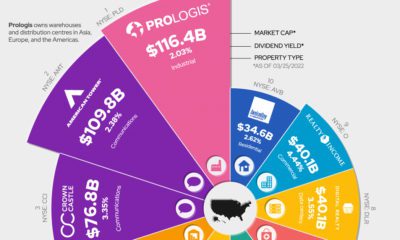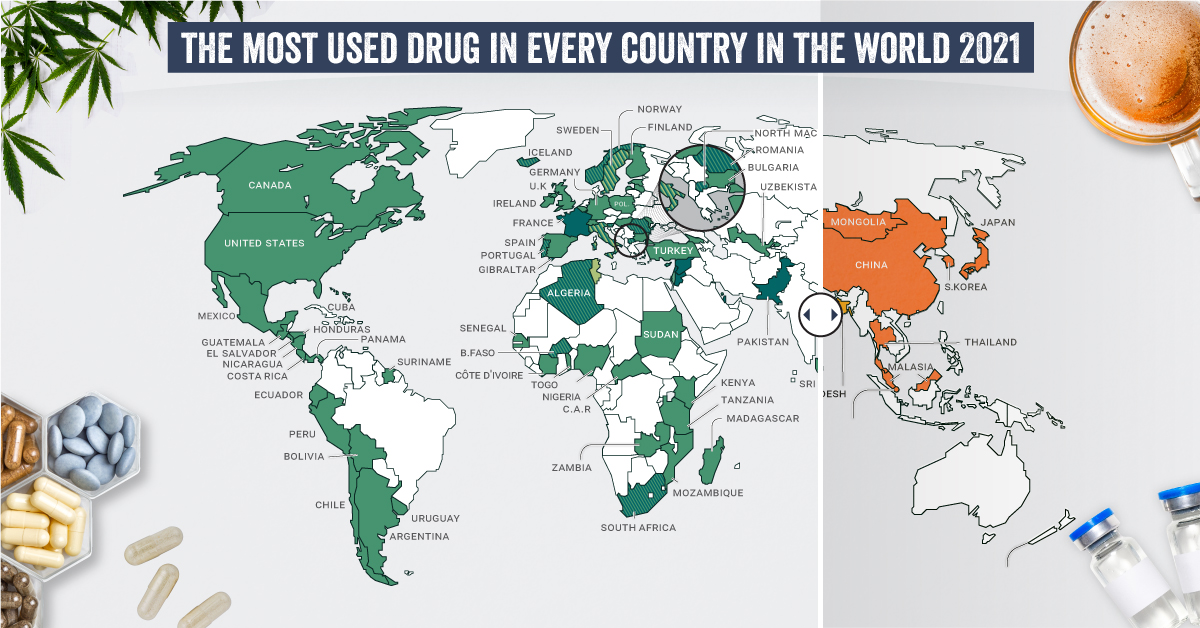Despite the fact that the first-recorded cannabis use by humans was from as far back as 6,000 years ago, the emerging cannabis market remains a challenging enigma for most investors to wrap their heads around. The opportunity is there, but there are few precedents for companies pioneering in the space. What will users look for in a legal cannabis product, and how can investors and companies prepare to make the most of this Wild West of a market?
What Investors Need to Know
Today’s infographic comes to us from The Green Organic Dutchman, and it serves as an introduction to the story of cannabis, providing context around the plant, its history, market trends, and the potential of emerging legal markets. It’s the first part in an eight-part infographic series called “From Soil to Sale”, that will dive deeper into these trends and what they mean to investors.
The Bird’s Eye View
Cannabis has a 6,000 year history of human use – however, since becoming illegal in the early 20th century, it’s fair to say the knowledge gap has broadened as to the plant’s uses and potential. A Quick Overview: The female cannabis plant produces clusters of buds which are trimmed down for commercial use. Trichomes are small “hairs” on the outside of cannabis flower that produce and secrete resin, including the cannabinoids and terpenes sought after by users. There are over 750 compounds found in the plant, including at least 104 cannabinoids. THC is the cannabinoid you are likely most familiar with (it’s the psychoactive one), but another cannabinoid that is being intensely studied is CBD – a non-psychoactive medicine that has wide applications to several diseases.
Key Industry Trends
As the legal industry takes off, here are three consumer-focused trends to keep in mind as you watch the cannabis sector:
- Environmental Sustainability Indoor cultivation of cannabis is both energy and carbon intensive, while outdoor cultivation uses massive amounts of water. With these potential impacts in mind, consumers will demand cannabis products that minimize effects on the environment.
- Organic Products More consumers are leaning organic. The global organic market is expected to blossom into a $320.5 billion market by 2025 – and organic cannabis will likely see similar uptake.
- Cannabis Retail Products The market for cannabis-infused food and beverages is expected to grow at a 25% CAGR between 2018 and 2022. In large legal markets like California and Canada, there is a multi-billion dollar opportunity for investors and companies in the cannabis space – and we will continue to demystify the legal cannabis market and how it works as we continue through this infographic series. This is part one of an eight-part series. Stay tuned by subscribing to Visual Capitalist for free, as we go into the cannabis market in more depth. on Humans have a storied and complicated relationship with drugs. Defined as chemical substances that cause a change in our physiology or psychology, many drugs are taken medicinally or accepted culturally, like caffeine, nicotine, and alcohol. But many drugs—including medicines and non-medicinal substances taken as drugs—are taken recreationally and can be abused. Each country and people have their own relationship to drugs, with some embracing the use of specific substances while others shun them outright. What are the most common drugs that are considered generally illicit in different parts of the world? Today’s graphics use data from the UN’s World Drug Report 2021 to highlight the most prevalent drug used in each country.
What Types of Common Drugs Are Tracked?
The World Drug Report looks explicitly at the supply and demand of the international illegal drug market, not including commonly legal substances like caffeine and alcohol. Drugs are grouped by class and type, with six main types of drugs found as the most prevalent drugs worldwide.
Cannabis*: Drugs derived from cannabis, including hemp. This category includes marijuana (dried flowers), hashish (resin), and other for various other parts of the plant or derived oils. Cocaine: Drugs derived from the leaves of coca plants. Labeled as either cocaine salts for powder form or crack for cocaine processed with baking soda and water into rock form. Opioids: Includes opiates which are derived directly from the opium poppy plant, including morphine, codeine, and heroin, as well as synthetic alkaloids. Amphetamine-type Stimulants (ATS): Amphetamine and drugs derived from amphetamine, including meth (also known as speed), MDMA, and ecstasy. Sedatives and Tranquilizers: Includes other drugs whose main purpose is to reduce energy, excitement, or anxiety, as well as drugs used primarily to initiate or help with sleep (also called hypnotics). Solvents and Inhalants: Gases or chemicals that can cause intoxication but are not intended to be drugs, including fuels, glues, and other industrial substances.
The report also tracked the prevalence of hallucinogens—psychoactive drugs which strongly affect the mind and cause a “trip”—but no hallucinogens ranked as the most prevalent drug in any one country. *Editor’s note: Recreational cannabis is legal in five countries, and some non-federal jurisdictions (i.e. states). However, in the context of this report, it was included because it is still widely illicit in most countries globally.
The Most Prevalent Drug in Each Country
According to the report, 275 million people used drugs worldwide in 2020. Between the ages of 15–64, around 5.5% of the global population used drugs at least once. Many countries grouped different types of the same drug class together, and a few like Saudi Arabia and North Macedonia had multiple different drug types listed as the most prevalent. But across the board, cannabis was the most commonly prevalent drug used in 107 listed countries and territories: How prevalent is cannabis worldwide? 72 locations or more than two-thirds of those reporting listed cannabis as the most prevalent drug. Unsurprisingly these include countries that have legalized recreational cannabis: Canada, Georgia, Mexico, South Africa, and Uruguay.
How Common Are Opioids and Other Drugs?
Though the global prevalence of cannabis is unsurprising, especially as it becomes legalized and accepted in more countries, other drugs also have strong footholds. Opioids (14 locations) were the most prevalent drugs in the Middle-East, South and Central Asia, including in India and Iran. Notably, Afghanistan is the world’s largest producer of opium, supplying more than 90% of illicit heroin globally. Amphetamine-type drugs (9 locations) were the third-most common drugs overall, mainly in East Asia. Methamphetamine was the reported most prevalent drug in China, South Korea, and Japan, while amphetamine was only the most common drug in Bangladesh. However, it’s important to note that illicit drug usage is tough to track. Asian countries where cannabis is less frequently found (or reported) might understate its usage. At the same time, the opioid epidemic in the U.S. and Canada reflects high opioid usage in the West. As some drugs become more widespread and others face a renewed “war,” the landscape is certain to shift over the next few years.












